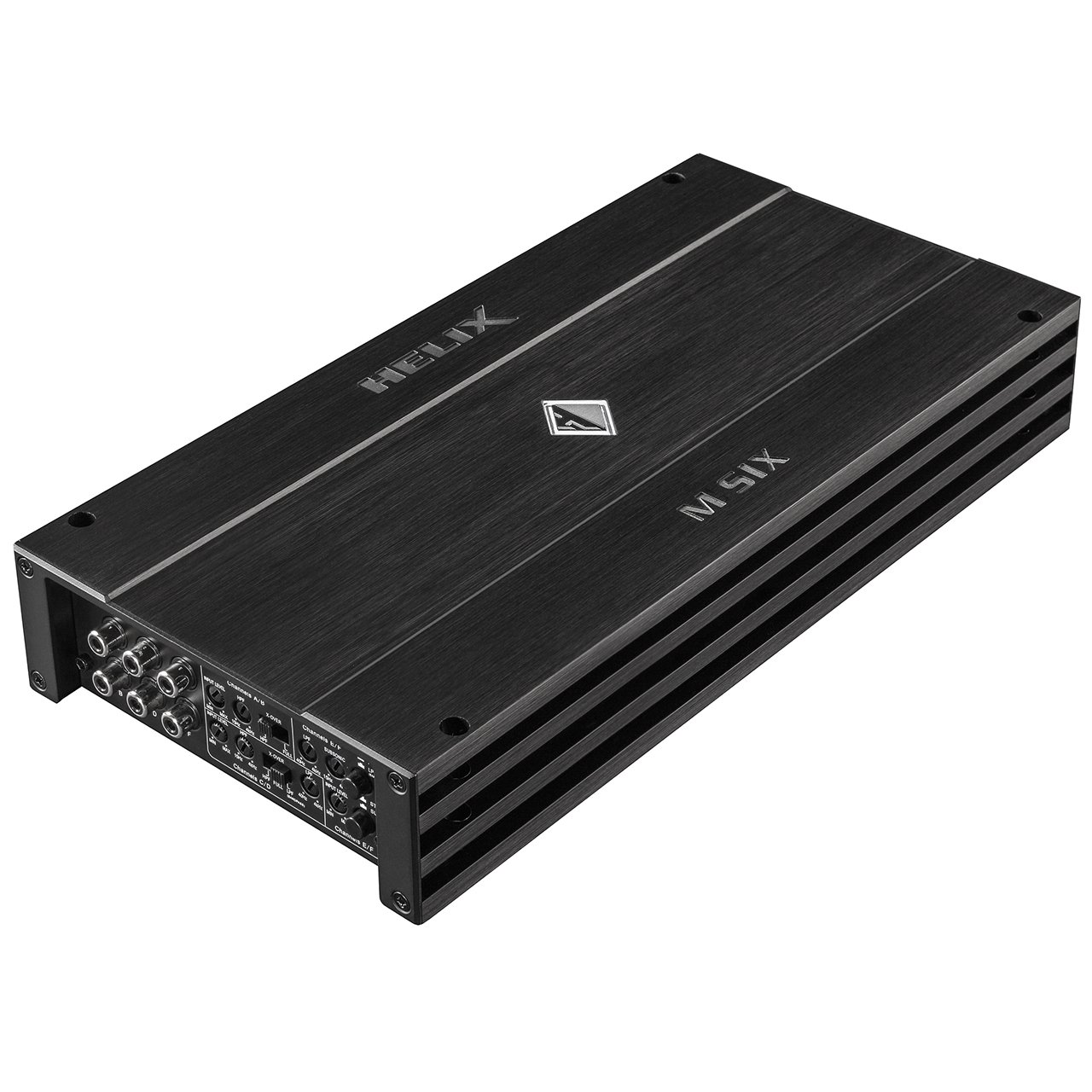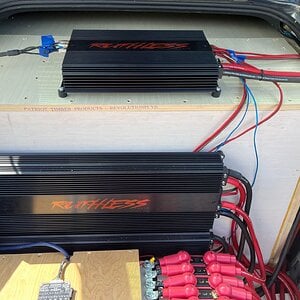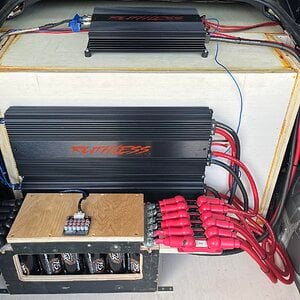Here is a post from a gentleman on a different forum. His name is Bob and his username is Aether Audio:
"To add to Mr. Haskins comments, I would point out that the "distortion" he refers to is the result of several more complex and detailed factors. As he quite correctly points out, the movement of a piece of wire (and even more so, a coil of it) in a magnetic field produces a voltage that is directly proportional to the amount of wire (measured by whatever graduation you prefer) moving through a magnetic field of given strength. This is basic electromagnetic theory and the fundamental forces involved in traditional generators of electricity.
The problem in audio arises from the fact that the amplifier is sourcing a signal (let's call it the "demand signal") into a complex electro-mechanical assembly we call a loudspeaker. For simplicity's sake, lets limit this loudspeaker to a simple cone based driver. That driver can be broken down in it's mechanical system to three major sub-components. The first is the mass of the cone, voice-coil, spider and surround components. The second is the "springiness" of the suspension system (i.e., the surround and spider components). The third is the resistance to movement or "drag" of that same suspension system.
In an analogy of these three basic systems, there are direct counterparts in electrical circuits. The mass can be thought of as possessing the quality of inductance (the electrical property of a coil of wire). The "springiness" of the suspension components can be thought of as possessing the quality of capacitance (the electrical quality of a capacitor). And the resistive "drag" of the suspension… as a resistor.
Depending on the values of these three electrical components and their physical arrangement/connections, they can form what we call an "oscillator." Once an oscillator is energized, it will continue to produce current flow back and forth between the coil and the capacitor - often long after the excitation energy that started the process has stopped flowing into the circuit.
Well...this same condition can (and usually does) take place in our simple loudspeaker. When the "demand signal" sent out from the amplifier drives the cone in a given direction, the system has the tendency to cause the cone to keep moving - even after the demand signal has told it to either stop or change directions. This is primarily because of the mass of the cone/suspension assembly. Just like a freight train can be hard to start and stop because of its mass, the loudspeaker will have this same problem.
If a simple "impulse" is sent out from the amplifier "telling" the cone to move in one direction only - then stop, the tendency is for the cone to keep going for a distance after the stopping point. This quality is called "overshoot" and is the same problem you have trying to stop your car instantaneously. Slamming on the brakes in your car will likely cause you to "skid" for a ways. In the case of the loudspeaker though, once it has come to a stop it will then move back in the direction of the stopping point intended as programmed by the demand signal. Here again it will often go a little further and overshoot in the opposite direction. This process will continue, back-and-forth, overshooting the correct stopping point by less and amounts until the cone finally stops in the proper position. This back-and-forth process is called "ringing" and plagues all mechanical systems to some degree. It is the ringing part that has an analogy to an electrical oscillator.
Adding resistance to the system will have a tendency to "dampen" this ringing. If enough resistance is added then the system it will "undershoot." This means the cone will start to slow down before it reaches it's stopping point. If this happens then it will not be "obeying" the demand signal because it's slowing down before it's being told to.
Whether the system simply undershoots, overshoots once or rings - any aberration from the movement being called for by the demand signal is a form of distortion. As bad as this may seem, there is a secondary side effect that can be just as negative.
Under any of the conditions outlined above, seeing that the cone/voice-coil system is no longer moving as it's being "told to" by the demand signal and because the voice-coil is moving in the magnetic field of the magnet - it becomes a "generator." It suddenly switches from being a "driven element" into a "driving element." Under such conditions of movement beyond that programmed by the demand signal, it generates a "back voltage" or...back emf (electro-motive force). This back emf is now attempting to cause current to flow back into the amplifier.
This effect can either be major or minor, depending on the amplifier design. If the amplifier uses negative feedback in its design, it will see this "new signal" on its out put terminals as an "error." It knows what signal it generated (the demand signal) and it knows this new signal does not belong there. So...the amplifier's error correction circuitry will try to produce a signal 180 degrees "out of phase" and of the exact same magnitude of this "error signal" - in order to cancel it out or "squelch it." Essentially, the amplifier will try to make the error go away. This whole process of error correction makes the amplifier work harder. In fact, it keeps the error circuitry very busy. If for some reason the amplifier makes a "mistake" in generating the proper error-correcting signal, it now has produced a new distortion product that was never there to begin with. The “busier” the amplifier is making corrections; the more likely it will make mistakes. That’s why it is important to know a little bit about a given speakers impedance and electrical phase performance. Low impedances and large amounts of electrical phase variations can cause amplifier problems by “working it to death” – so to speak.
As you can see from the above, that's why there are many advocates of "zero-feedback" amplifier designs. The view is that it's better to let the distortion resulting from the back emf to exist, rather than try to correct for it and make even bigger mistakes that can sound even worse.
My view is that of a compromise approach. Make the amplifier as accurate as possible without feedback and then use just enough feedback to control back emf induced distortions. But this is a whole other issue.
To compound the problem, most speakers have more than 1 driver and a bunch of capacitors, coils and resistors in their passive crossover networks. Any of these have the potential to generate back emf voltages. Some crossover designs can be such a bad combination with a certain amplifier that they can cause the amplifier to oscillate itself. This is somewhat of a different issue but the fact is, back emf from a speaker/crossover network can reek all kinds of havoc with a given amplifier. To be sure, the entire subject is quite complex as you start digging deeper."
There are very VERY few amplifiers with" negative feedback" output sections for this very reason. This example here is the closest real-world example of Damping factor at play. It would be an active component, or in its simplest form an inductor coil capable of "storing" the speakers countering electrical charge until the amofier output cancels it out and drives the speaker once more.
Matt



